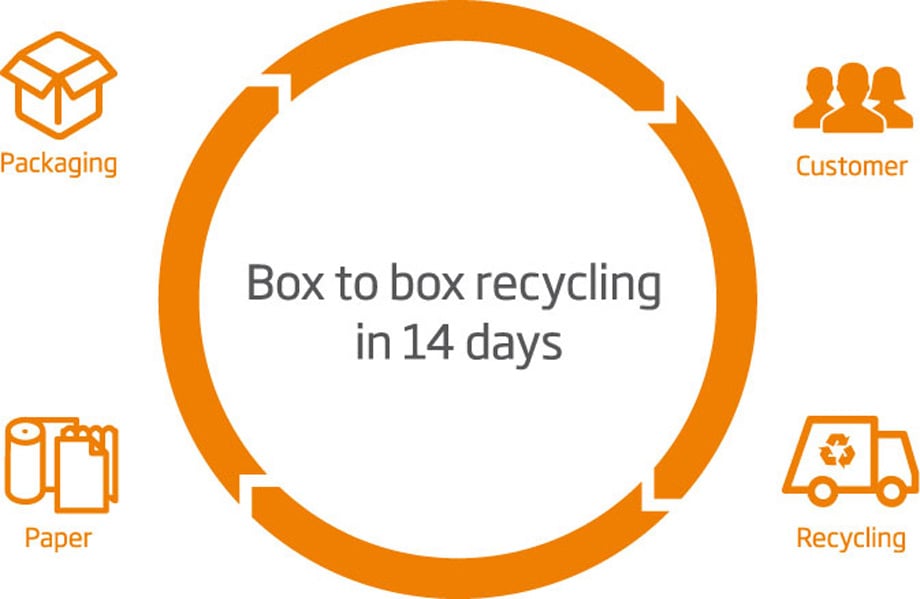Why sustainability starts with clever design
Sam Jones, Customer Sustainability Manager at DS Smith recently shared his thoughts on why sustainability starts with clever design, with Packaging Today. Read the full article below:
Week after week, companies announce ambitious sustainability targets and their desire to reduce their carbon footprint. Many are exploring sustainably sourced and recyclable materials and considering how else they can reduce waste.

In particular, eco-friendly packaging is critical as it is often consumer facing and highly visible. As Europe’s leading supplier of sustainable packaging solutions, we have seen time and again the difference thoughtful design can make to the supply chain and to overall carbon emissions. So what should businesses bear in mind as they review their packaging choices?
Material issues
First of all, it is important to consider what materials to use. Consumers and stakeholders expect packaging to be ethically sourced, traceable, recyclable and if virgin fibres are involved, they should come from sustainable forests. At 81 per cent, paper and board packaging is the most widely recycled material in Europe. Not only is corrugated packaging recyclable, it is recycled in practice. DS Smith ensures materials are kept in the supply chain for as long as possible, and using our ‘box to box in 14 days’ process we make sure that used paper and carboard is recycled back into production in as little as two weeks.

Packaging that lasts
From here, the next consideration is design. Intelligent packaging solutions can be designed to prevent damage and ultimately waste by holding products in place while in transit without the need for huge amounts of excess packaging. This is especially relevant in the context of the significant growth of e-commerce, with more complex supply chains and higher return rate of goods.
 Our research shows there are up to 50 touchpoints in the average e-commerce supply chain resulting in numerous opportunities for products to get spoiled. That’s why we have developed DISCS™, an industry first which tests whether packages can survive the bumps and scrapes of the average e-commerce supply chain.
Our research shows there are up to 50 touchpoints in the average e-commerce supply chain resulting in numerous opportunities for products to get spoiled. That’s why we have developed DISCS™, an industry first which tests whether packages can survive the bumps and scrapes of the average e-commerce supply chain.
One size does not fit all
It’s not just about ensuring that packaging can weather the journey. Companies also need to use the latest technology to design packaging that actually fits the products, reducing product movement and void space and not requiring reams of packing filler or polystyrene balls. Opening a parcel and being showered with excess packaging or receiving an enormous box to transport a small item goes down very badly with consumers who are now much more environmentally alert. Also shipping air is a waste of resources.
 While this is a huge challenge for businesses because of the sheer number of different product combinations that may need transporting, it is the way forward for any business serious about sustainability. For this reason, we have pioneered a new technological solution called Made2fit, which enables the creation of right size packaging. Creating a right size pack lowers costs for e-retailers by reducing both operational and shipping costs: saving storage space, cutting labour costs and order administration, and significantly cutting assembly and packing times.
While this is a huge challenge for businesses because of the sheer number of different product combinations that may need transporting, it is the way forward for any business serious about sustainability. For this reason, we have pioneered a new technological solution called Made2fit, which enables the creation of right size packaging. Creating a right size pack lowers costs for e-retailers by reducing both operational and shipping costs: saving storage space, cutting labour costs and order administration, and significantly cutting assembly and packing times.
Understanding the chain reaction
It is also important to review packaging design in light of the supply chain as a whole. Brand owners need to explore how their packaging is processed and managed after use, as well as the impact their packaging makes on shelf. Tracing material and energy usage all the way from design to production through to end use and recycling, and trying to keep materials in supply cycles for as long as possible can provide valuable insight. This sort of supply cycle thinking is our way of shaping the circular economy and transforming supply chains to focus on more cyclical resource systems.
We believe companies can use smart design to stand out in terms of sustainability and that this matters to consumers. Informed packaging decisions can improve the sustainable credentials of a brand, strengthen customer loyalty and stakeholder relationships and ultimately impact the bottom line.